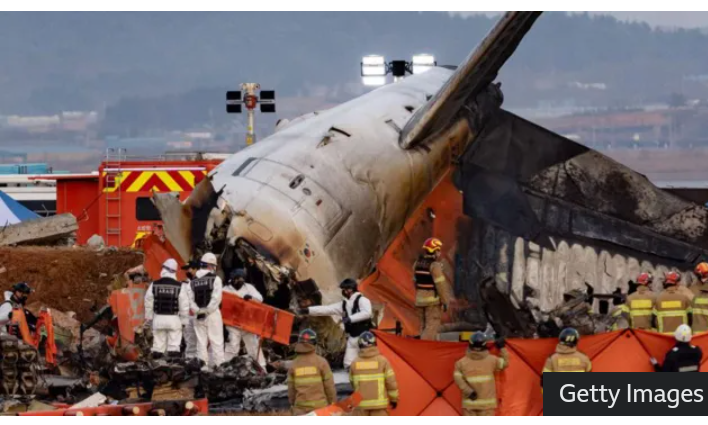South Korea To Revamp Airport Runway Safety Following Deadly Crash.
In the wake of December’s tragic plane crash that claimed 179 lives, South Korea has announced significant changes to the infrastructure at nine of its airports. The incident, which occurred at Muan International Airport, has been identified as the deadliest in the nation’s aviation history.
The Jeju Air flight, returning from a festive holiday in Thailand, was attempting an emergency landing when it collided with a concrete barrier supporting the localiser—a critical navigation system for aircraft landings. The impact led to an explosion, underscoring the potential hazards of such structures.

Following a comprehensive review of all national airports, South Korea’s transport ministry has decided to adapt the runway safety areas at seven airports. This includes Muan and Jeju International Airport, the latter being the country’s second-largest airport. The focus of these adaptations will be on the concrete barriers housing the localiser systems.
Officials have pinpointed nine localisers that require immediate modification. Plans include either replacing these concrete bases with lighter, less hazardous structures or relocating them underground to minimise risks. At Muan International Airport, the entire concrete mound will be dismantled, and the localiser will be reinstalled using breakable structures to enhance safety.
Air safety experts had previously noted that the high casualty count might have been mitigated had the barrier not been in such proximity to the runway’s end. An operating manual from Muan International Airport, which surfaced post-crash, had indeed highlighted the issue. Dated early 2024, this document from Korea Airports Corp recommended a reassessment of the localiser’s position during planned expansions.
The transport ministry is now committed to not only altering these physical structures but also reviewing and potentially updating safety protocols across all airports to prevent future tragedies. The cause of the crash remains under investigation, but these infrastructural changes signify a proactive approach to airport safety in South Korea.
This overhaul comes as part of a broader initiative to ensure that South Korea’s aviation sector maintains its reputation for safety and efficiency, reassuring both domestic and international travellers of their well-being during air travel.


